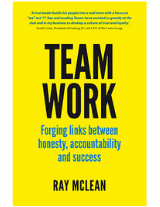What is the connection between the “Moneyball” and the emergence of Leadership groups in the Elite sporting codes?
“Moneyball” was in essence a story about a paradigm shift in Major League baseball.
What is a paradigm shift?
It is when a new idea breaks the thinking pattern we are caught in, and causes a change which is ongoing. A paradigm shift then is much different to a whim or fad.
“Moneyball” highlighted a couple of key ingredients you need to cause a paradigm shift.
Firstly you require someone to create the new paradigm. Usually they will be those external to the industry, who can view the issue differently to those directly involved.
In “Moneyball’s” case this was a statistician with an economics degree who came up with a completely new way of approaching recruiting.
The second component needed in a paradigm shift is a powerful figure within the industry to have the belief, courage, and resilience to take on the new idea.
What separates a paradigm shift from a whim or a fad is that the idea created goes on to become the new norm. When I read the book, and then watched the movie, I sensed an immediate flashback to 1994; in particular my first meeting with the Senior Coach of the St Kilda Football Club – Stan Alves. At that stage I had just left a career in the RAAF and had developed a program to empower team members to share leadership responsibilities, specifically to improve performance.
I had a strong belief the model could be applied to sporting teams. Given I had grown up in Victoria, AFL was my preferred target.
An essential driver within the program was to move away from a single figure (Captain) as leader and select a player leadership group to assist in pushing standards, training and performance.Changing a paradigm is easier working with a poorly performing team-they have a greater motivation to consider change. Both the Oakland A’s and St Kilda in 1994 fitted in this category.
Stan and I had regular correspondence through 1994 but he said there would be strong reservations about selecting a leadership group and consulting with them on issues related to discipline, training and performance. At that stage the AFL model largely relied on autocratic coaching styles. If he were to consult it would be periodically with the Captain, who was generally selected by the match committee or board and typically was the best player.
By the end of 1994 Stan was considering having the players select a leadership group based on who they trusted and then selecting the Captain from that group. I was called to a meeting with the key members of the St Kilda football Department to explain the model and its benefits. It is always hard exalting the virtues of something which is a new concept and breaks with traditional thinking. Included in the group were Kelvin Moore (Hawthorn great) and Trevor Barker (Saints favoured son). To say that I was nervous and intimidated would be an understatement but I had Stan there for support. The other guys to their credit where sceptical but not negative. I must admit the meeting was frighteningly similar to the scene in “Moneyball” where the new guy goes to his first recruiting meeting.
The next stage was to attend the pre-season player camp in early 1995 and begin setting up the program. The players expected to cope with some physical torture laced with some drinking time for bonding purposes. The camp was new ground in many ways but certainly beginning the process of selecting the leader group was novel to them. They wouldn’t know until about May of 1995 the level of responsibility which was coming their way.
We started the season disastrously and the pressure mounted on the club, but mostly the coach. After the Saints had been flogged by Essendon at Princes Park in April of 1995 an article appeared written by Bruce Matthews in the Herald Sun – this was not dissimilar to Billy Beane’s experience. Stan was asked about the plan after such a disaster and he said that he had been offered advice which ranged from “give them a hard week” or “give then an early session” right through to “give them the week off”. In terms of what we were looking to do I couldn’t see any of them solving our problem. He then talked about sharing the review and planning with the 6 leaders. At this stage Stan was under pressure to be seen to be doing something.
The early option was to smash the players at training and then at least external forces would be calmed. I knew very well, how hard it was for Stan to continue to trust, support and educate the leadership group through this period. Then on May 4th Trevor Grand wrote an insightful article in the Herald Sun, titled “Just sack the Coach”. He was reinforcing how to do just that was short sighted in its approach, however there was a large photo of Stan as the most likely candidate of all the current coaches. The test was now on as to whether we push through or accept the leadership group concept as a failed exercise.
I recall (in my naivety) contacting the President, Andrew Plympton, and asked if we could call a meeting with Stan, key Football Executives and key board members but most importantly the player leadership group to discuss the issues more openly. Andrew agreed. This was pivotal. Just as in “Moneyball”, the owners twice had to back Billy Beane, Andrew had brought into the concept.
The meeting was kept quite secret. We knew if the detail had slipped out we were in for a public flogging. It was an open, tough meeting. Most importantly the leadership group now understood their responsibility. Performance improved through the latter half of 1995. Steadily through 1996 and culminated in an appearance in 1997 the finals in 1998 and then the abrupt sacking of the coach.
The key point is that a paradigm shift does not always provide a fairy-tale ending but what you do see is others replicating the model. Today all AFL clubs have player Leadership groups and perhaps more of the most interesting indicators of the paradigm shift are that the AFL CEO now visits AFL clubs to discuss issues around the future of the game with these groups. Often we measure coaches only on premiership wins. Stan Alves contribution got the Saints close to a flag but he has certainly left a great legacy in terms of development of leadership among all clubs.
Ray founded Leading Teams in 1992 after working as a leadership officer with the Air Force. He has published two books, ‘Any Given Team’ and ‘Team Work’. Ray is based in Geelong.
Learn more about Ray.



